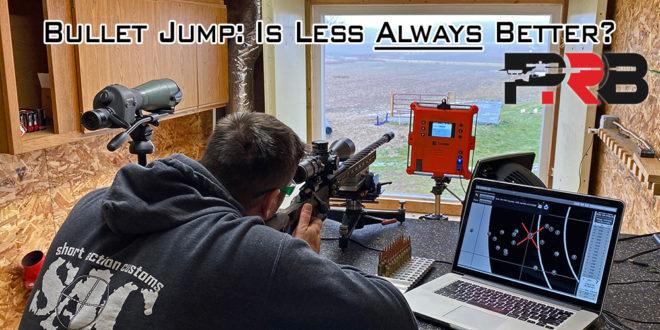Your definitions of 'throat' and 'freebore' differ from what I've seen in some other sources. For example
https://en.wikipedia.org/wiki/Freebore says the cylindrical and smooth
throat ends at the back of the
leade, and the leade tapers down from the (unrifled) throat to the fully rifled
bore (so that the rifling starts at the back of the leade and gets deeper as you move forward, until the rifling achieves full depth at the back of the bore). According to that article (and the half-dozen books it cites), 'freebore' and 'throat' are synonymous. Here's that article's diagram:

In contrast, the current Nosler and Hornady reloading manuals treat 'throat', 'freebore', and 'leade' as synonyms. The Hornady guide describes the throat/leade/freebore as the "smooth" part of the chamber forward of the case and aft of any rifling. That would make the tapered/semi-rifled section part of the bore, rather than giving the tapered part its own name. It's worth pointing out that the SAAMI diagrams and the reloading manuals agree about this much: the diameter of the smooth, cylindrical part of the chamber immediately forward of the case is larger than the diameter of the bullet shank. For example, the 300 RUM's chamber is 0.3091" in the smooth, cylindrical part, while its bore is exactly 0.3000". So the bullet will not touch the chamber while traversing this part of it, if the bullet remains well centered. The bullet is "free" in this part of the chamber. That suggests a reason for making 'throat' and 'freebore' synonymous. The bullet seats itself into the "lands" (where the bullet lands coming out of the "free" part of the chamber). The lands are somewhere in the tapered part of the chamber. So the bullet is not "free" throughout the tapered part.
All of this indicates to me that the words 'throat', 'leade', and 'freebore' are used in several ways, depending on what you read. Note however that 'freebore' does not refer to an
unusually long chamber, by either account. It just refers to one or two consecutive sections of the colored diagram, and it connotes the fact that a bullet may not touch the barrel when it first accelerates until the bullet's ogive touches the lands. But I think we can agree (by inspecting SAAMI-specification diagrams) that most rifle chambers have the five differently colored sections in the Wikipedia article's picture, regardless of what you call them. (Looking at the 243 Winchester diagram just now, it seems not to have the smooth, cylindrical part. I wonder about that.) For now let's call the light-blue part the
smooth, cylindrical part, and the dark-grey part the
partially rifled, tapered transition part.
Here's my point about the 300 RUM: the smooth, cylindrical part of the 300 RUM's chamber is about 0.12" long, which is 2/3 what you find in the 280 AI, and way less than the 0.3" or so in the 300 Weatherby Magnum. The 300 RUM's partially rifled, tapered transition from smooth cylinder to bore is tapered at exactly one degree. This makes the transition zone longer than it would be if it had the more common transition-zone-taper angle of around 1.3-1.5 degrees. To illustrate the variation: the 28 Nosler and the 7mm Remington Magnum transition at 3.0 degrees, the 280 AI and 300 Winchester Magnum at about 1.4 degrees. The 300 Weatherby transitions at about 1.03 degrees, almost the same as the 300 RUM. (If you poke around in the SAAMI specification enough, you'll find an old rifle cartridge that transitions at 25 degrees!)
Here's the trigonometry: x = ((0.3091 - 0.3000) / 2) / tan(1) = 0.261. That is, the length of the tapered part of the RUM's chamber is 0.261". If the RUM had a 1.5-degree taper, that number would decrease to 0.174", shortening the tapered part by 0.087". The distance from brass to bore would reduce from about 0.3" to about 0.2". In the Weatherby you have over a half inch from brass to bore. Changing that taper would reduce that length to around 0.4". One could argue that the gentle taper is meant to increase jump (distance from seated ogive to lands). Both the RUM and the Weatherby have that gentle taper. But the Weatherby has
way more smooth, cylindrical part.
Here's a fine point: the Weatherby's smooth, cylindrical part is 0.3084" in diameter, giving gases 8% less diameter and 15% less surface area to move around the bullet than in the RUM (but three times as much jump length to do it).
So comparing the 300 RUM and 300 Weatherby chambers, you conclude that the RUM has about
a third as much smooth, cylindrical part as the Weatherby, and about
the same length of partially rifled, tapered transition part. Overall the Weatherby has nearly twice the jump of the RUM. In the Weatherby
far more than the RUM, this long jump lets gases from the overbore case escape around the bullet, before it seats itself at the lands. Judging from the numbers I see in the SAAMI specs for a variety of modern big-game calibers, the RUM's jump is pretty typical.
Having said all that: a few hundred rounds down the road, and the 300 RUM's throat will have suffered significant erosion, increasing the jump substantially. The 300 RUM (like the Weatherby) is hard on barrels. Like other barrel-burner calibers, you can expect "good accuracy" to last for 500 to 1,000 rounds, depending on how well you treat your gun. Imagine the erosion rate and the resulting jump in a 300 Weatherby chamber, and how that might affect accuracy after a few hundred rounds.
There's a whole other debate about "chasing the lands" by lengthening your cartridges and changing your powder loads every 50-100 rounds, to preserve load tuning and accuracy as the throat erodes. I don't have an opinion on the wisdom in that, but I'd love to hear others' opinions.
Internal and external ballistics both are engineering disciplines that draw their methods from physics, chemistry, metallurgy, aeronautical engineering, and similarly quantitative hard-science subjects. Ballistics questions admit very precise answers. Language such as, "Let's get some things squared away here" treats ballistics as if it were a subject far more rife with uncertainty, such as politics or trial law. I encourage participants in this forum to set aside the sentiments that often become agitated when discussing such subjects, recognizing that we are discussing matters where it is quite practical to measure, calculate, or specify physical realities to the nearest ten-thousandth of an inch (chamber and reamer dimensions), or to five out of three thousand feet per second (muzzle velocities). We are not quite doing particle physics, but we are also not arguing about how much of a federal deficit is prudent during peacetime. We can all be friends here.

 precisionrifleblog.com
precisionrifleblog.com

